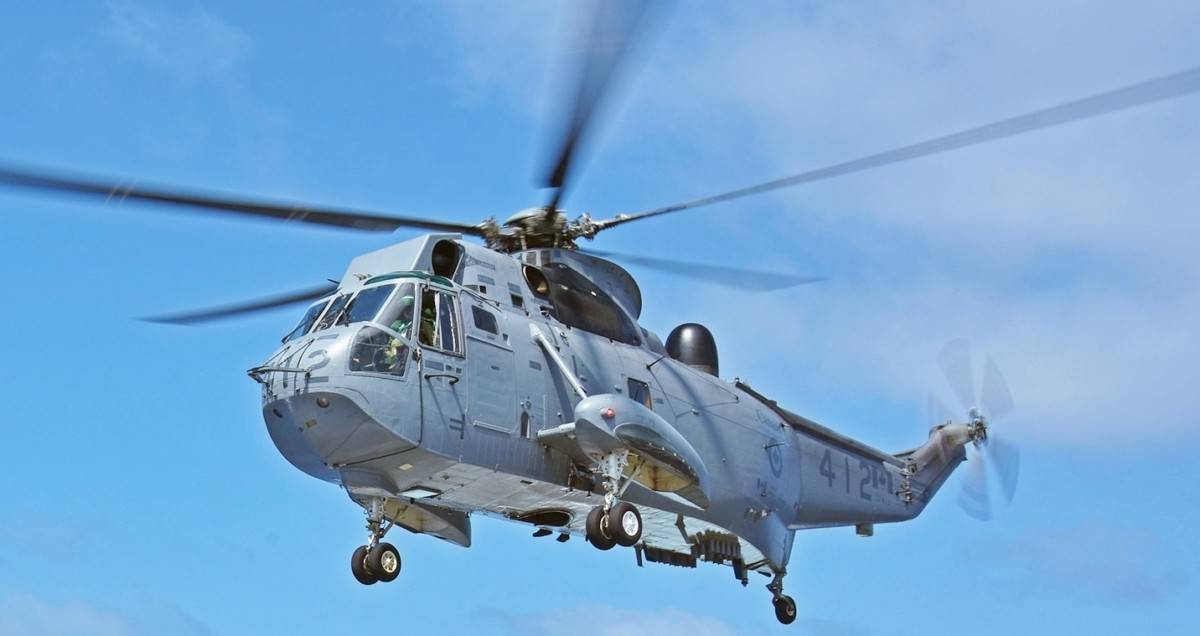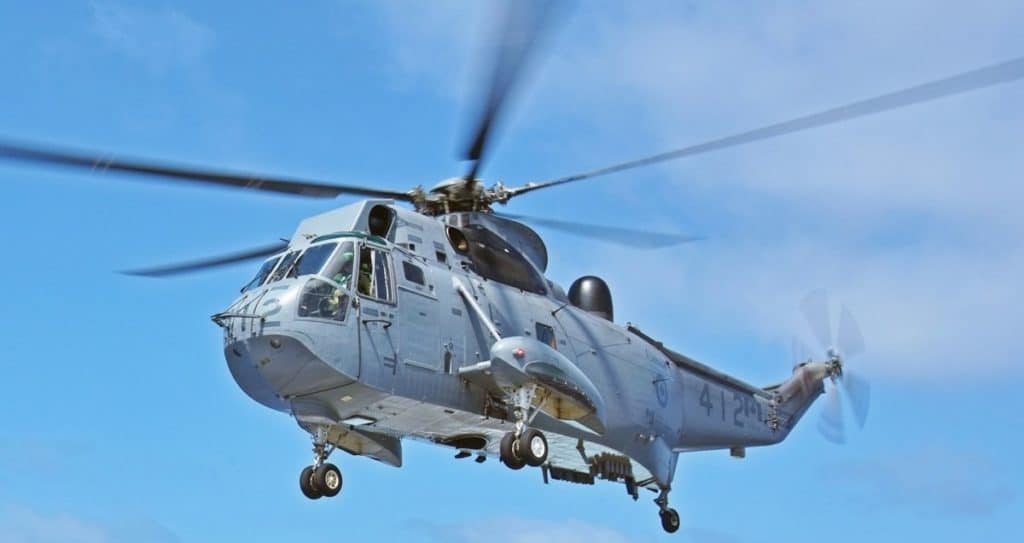
We have all heard a helicopter flying overhead and when you look up some seem to be rocketing through the sky, some can be flying slowly and some not moving at all. With an aircraft capable of such a variety of speeds how do pilots select and control the speed they wish to fly at in a helicopter?
Helicopter pilots change the speed of the helicopter by applying forward or aft cyclic to tilt its main rotor disk. This increases or decreases lateral thrust but also makes the helicopter climb or descend. Pilots cancel out the altitude change using the collective to maintain altitude as airspeed changes.
When learning to fly, the mastering of balancing all the flight controls takes time, but once mastered helicopter pilots can select and maintain any airspeed they wish with ease. To find out how pilots do this please read on…
What Controls the Speed of a Helicopter?
To control the speed of the helicopter the pilot has to primarily use the Cyclic with their right hand and the Collective in their left hand:
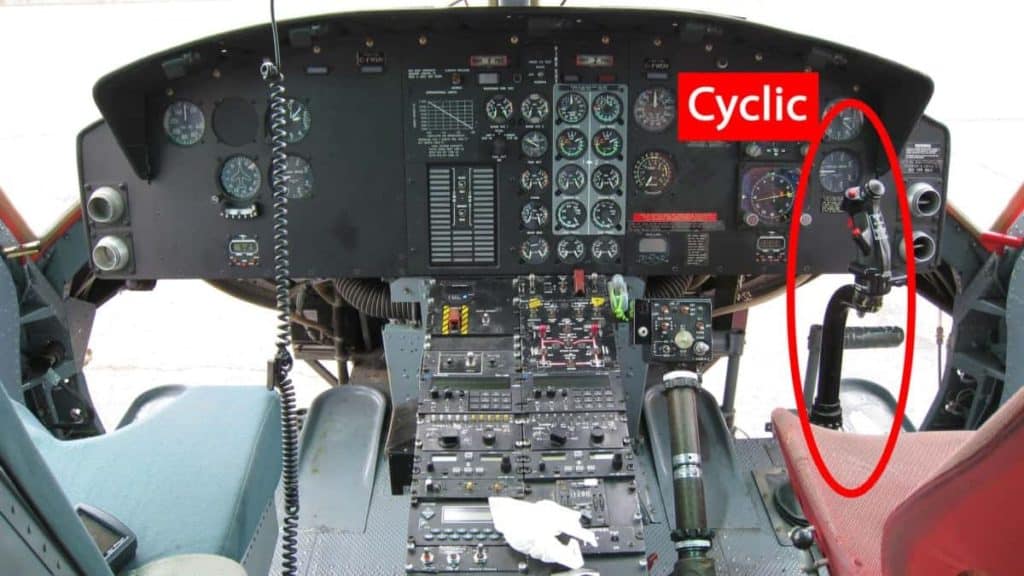
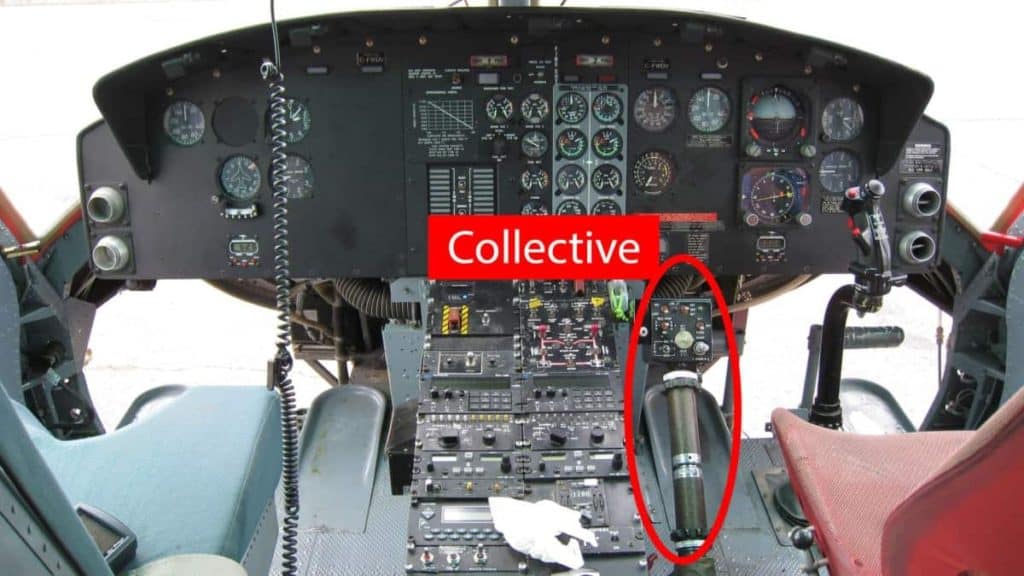
The speed of the helicopter is controlled by how much lateral thrust the main rotor disk is applying to the air around it. By pushing the Cyclic in a forward direction the main rotor disk tilts down towards the front creating a horizontal thrust vector.
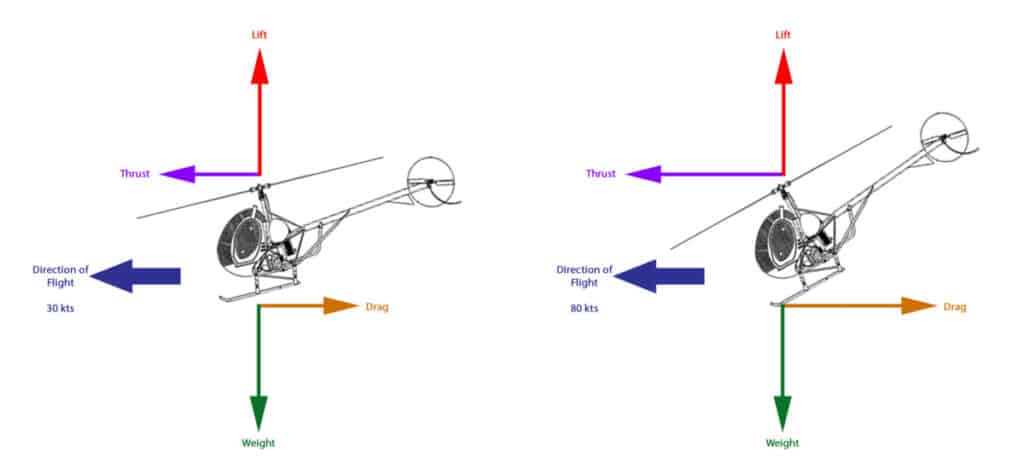
The more the main rotor disk tilts, the faster the helicopter moves.
Learn More…
Try These Articles:
* How Does Wind Affect a Helicopter? Pilot Tells All!
* Backward Take off’s – Why Do Helicopters Do Them?
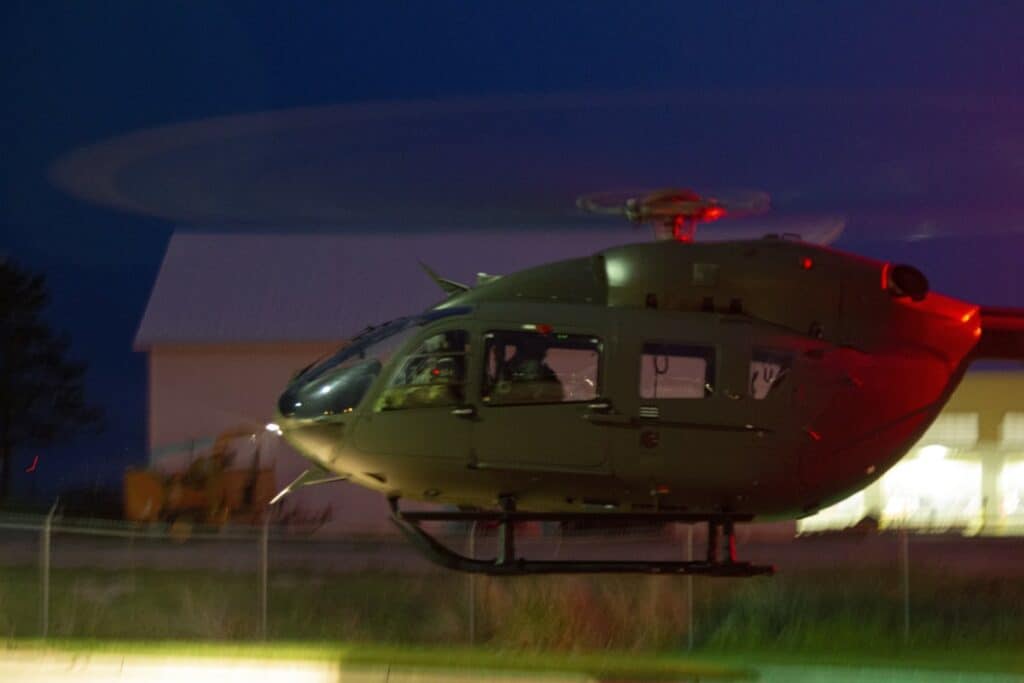
The cyclic controls the direction in which the main rotor disk tilts. It does this by changing the pitch of each main rotor blade during its orbit. To tilt the disk forward, the pilot pushes the Cyclic forward. This adjusts the pitch angle of each main rotor blade to be maximum at the rear and minimum at the front.
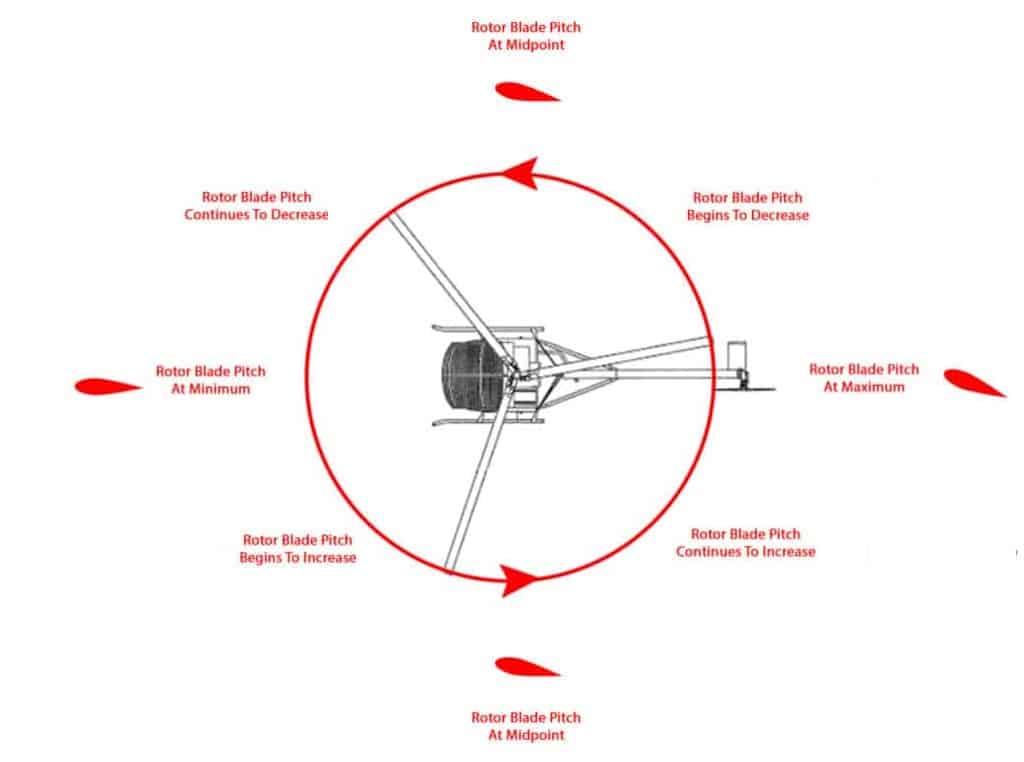
This causes each blade to rise when at the rear and descend when rotating around to the front. This is how the disk tilts. We call it a disk because when the main rotor system is turning the blades make it look like a disk.
Now that we know how the pilot changes speed on the most basic level we have to talk about the other things that happen any time the pilot moves the Cyclic.
As seen, the Cyclic is used to vary the airspeed of a helicopter, but to effectively change the airspeed, three components come into play:
- Rotor Disk Tilt
- Altitude
- Trim
How Do Helicopters Accelerate?
For a helicopter to accelerate, some of the upward lift has to be transformed into horizontal thrust (a force that moves the helicopter fuselage horizontally). To achieve this, the pilot smoothly moves the Cyclic control forward using their right hand and maintains altitude with the Collective.
Rotor Disk Tilt
This tilts the rotor disc downwards at the front of the helicopter and generates forward thrust causing the helicopter to begin accelerating. However, this also causes the helicopter to begin losing altitude.
It does this because some of the power used to maintain the hover or its last flight condition is now being directed into the thrust vector instead of it all going into the lift vector. This causes the helicopter to descend. The further the Cylic is moved, the more power is being moved from lift to thrust, and the more the helicopter descends.
Altitude
To stop the helicopter from descending, the pilot raises the Collective slightly using their left hand. By raising the Collective, it increases the pitch angle of ALL the main rotor blades at the same time (Collectively) causing them to create more lift. This increase in lift stops the helicopter from descending by adding more to the lift vector.
But, whenever the pitch angle of the main rotor blades increases, so does the amount of drag they create. If nothing is done to overcome this drag it will cause the RPM of the main rotor system to slow down. This is not good as it is the RPM of the main rotor system that is acting as a wing and keeping the helicopter airborne!
As the pilot raises the Collective control with their left hand a mechanical linkage or digital signal tells the engine to increase power. This increase in power drives the main rotor system harder to overcome the increased drag being created by each main rotor blade and maintains the RPM of the main rotor system.
Now this is all good, but we have a further situation now that the power has changed – Torque. Because of Newton’s Third Law – ‘For Every Action there is an Equal and Opposite Reaction‘, this causes the heading of the helicopter to change too!
Trim
As the engine and main transmission turn, they drive the main rotor blades in one direction, but the torque pushes the fuselage of the helicopter in the opposite direction. To prevent the helicopter from spinning around its main mast it uses a tail rotor system to provide a horizontal thrust in the opposite direction.
When torque and tail rotor thrust balance, the helicopter maintains its heading.
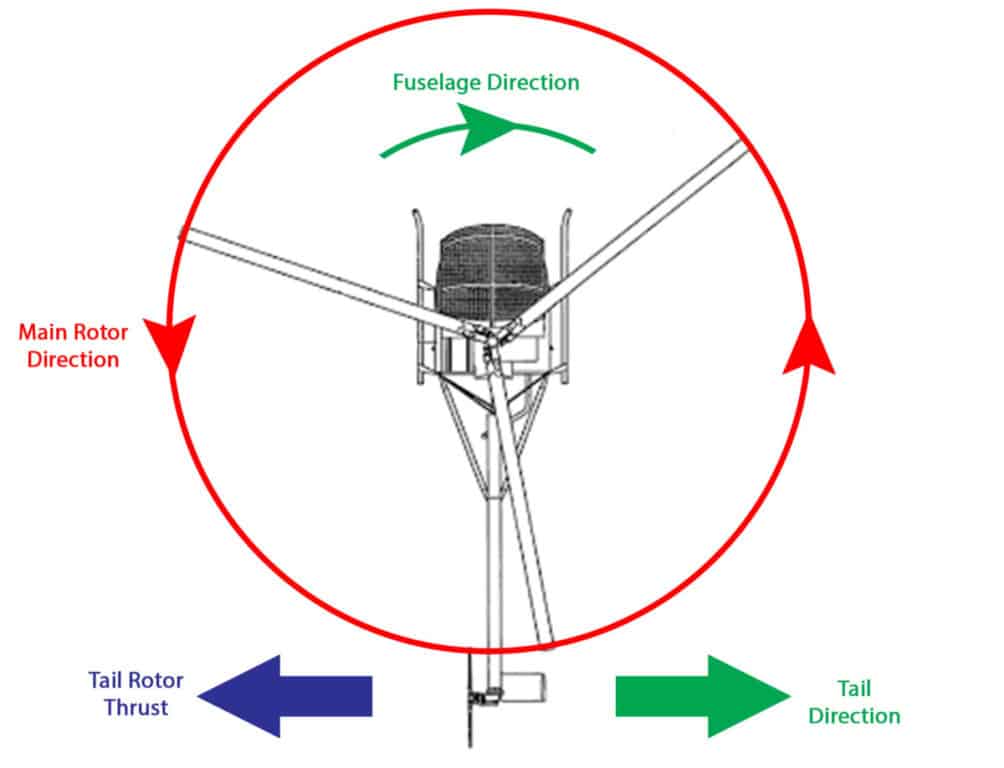
When the pilot raises the Collective and the engine increases power, the torque on the fuselage also increases. To keep the helicopter pointing straight ahead the pilot must adjust the amount of thrust coming out of the tail rotor system to balance the torque. They do this by using foot pedals:
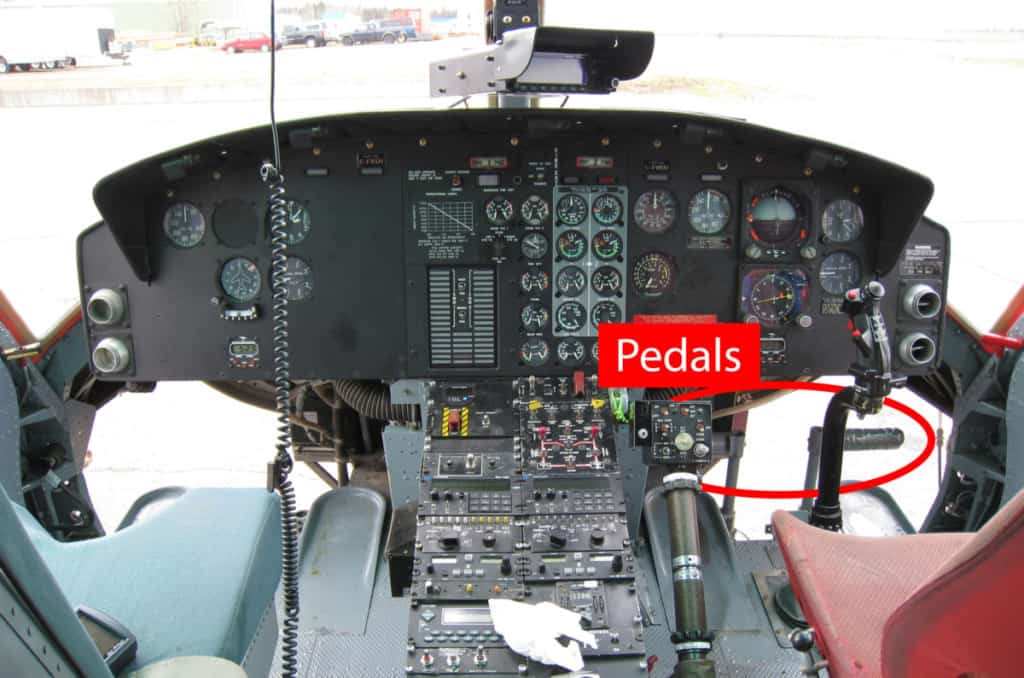
By pressing on the right foot pedal it moves the nose of the helicopter to the right, left foot pedal and the helicopter rotates left.
To Summarize:
To accelerate, the pilot:
- Pushes Forward on the Cyclic
- Raises Collective
- Maintains Heading with Pedals
When done in unison and in the correct amounts the helicopter will smoothly accelerate, maintain its altitude, and maintain its heading – Learning this coordination is what takes time when learning to fly!
I Hope That Makes Sense! If not, take a look at this video where I talk you through it while in flight;
How Do Helicopters Decelerate?
To achieve deceleration, the pilot places slight rearward pressure on the Cyclic to tilt the rotor disc downward at the rear of the helicopter and generate rearward thrust. This rearward thrust acts against the forward momentum of the helicopter if it’s in flight, and begins to slow it down.
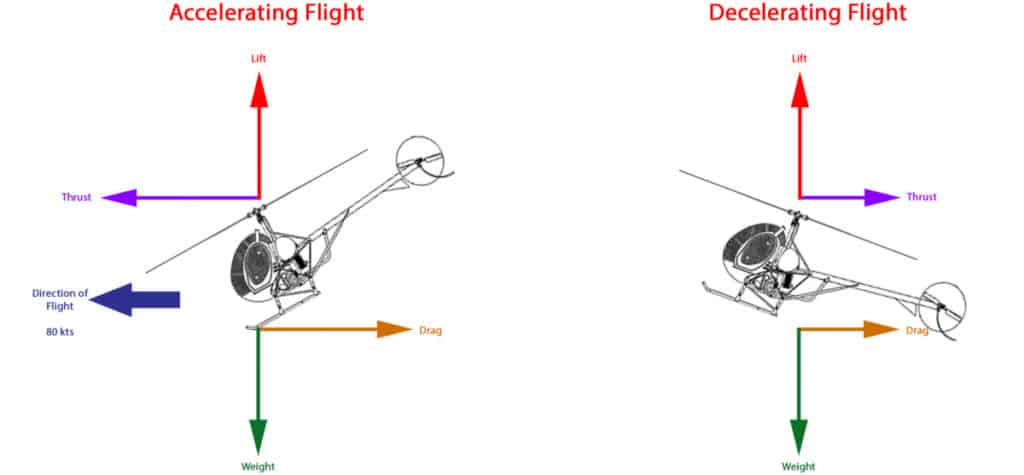
For deceleration, it’s basically the opposite of acceleration.
The pilot places aft pressure on the Cyclic to tilt the disk aft. When this happens however, the helicopter will begin to ‘Balloon Up’ and gain altitude as the up-tilted disk now acts like a sail. To overcome this the pilot lowers the Collective to maintain altitude.
Because the Collective has been lowered, it reduces engine power which reduces torque, so the pilot now has to remove the pedal input they placed in during acceleration or forward cruise flight so stay pointing straight ahead.
Again, all the control inputs have to be done in unison and in the correct amounts so the helicopter will smoothly decelerate, maintain its altitude, and maintain its heading.
Once the helicopter slows enough the pilot will center the Cyclic and bring the helicopter into a hover or slower forward airspeed. If the pilot continued to hold the deceleration, the helicopter would slow down, stop, then begin traveling in reverse.

Join My Newsletter & Get Great Tips, Information and Experiences To Help You Become a Superb Pilot!
How do Helicopter Pilots Select a Speed?
The operating speed of a helicopter is just the same as in your vehicle. The pilot accelerates or decelerates to achieve the desired speed and then configures the helicopter for the desired speed.
To achieve the desired speed the pilot maintains the Cyclic control in the position that gives them the desired airspeed (Say 60 knots for example). Then they adjust the Collective until they are neither climbing nor descending.
Helicopter pilots have several speeds they will generally use depending on the operation they are conducting:
Hover Taxi:
This is used to get from Point A to Point B which is only a short distance away. If it’s too far to climb and descend helicopter pilots will conduct a hover taxi. Typically when moving around a large airport for example.
A typical hover taxi will be around 40knots (46mph) and under 100 feet above the ground.
Orbiting:
Commonly used by Police and News helicopters when overhead a scene. A single point on the ground is of interest so the pilot will fly an orbit around this scene to keep it in view for their observer crew/camera operator.
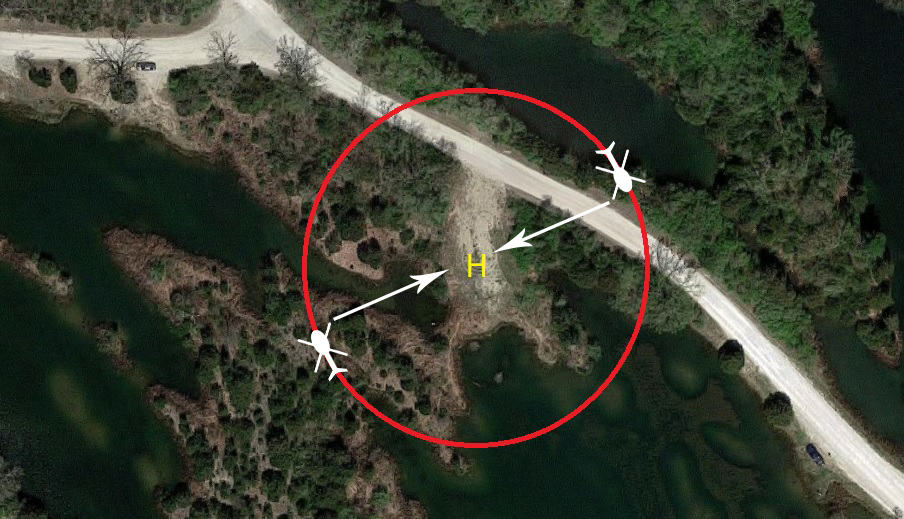
Utility pilots will also use an orbit to assess a landing site that is in a field, clearing, highway etc for objects and ensure it is clear and safe to land.
A typical orbit speed for most helicopters is 60knots (70mph)
Max Continuous Power Cruise:
Helicopter manufacturers will issue a power limit recommended by the engine manufacturer. This is a limit based on how hot the engine gets or how much power is being delivered to the transmission. Pilots can fly around all day long under this limit – Hence: Max Continuous.
Remember how I told you the Collective increases engine power, this is what the pilot uses to select a max continuous cruise speed. They will raise the Collective until they reach the power limit on their engine gauge/s. They then apply forward pressure to the Cyclic to speed up the helicopter to a speed where they no longer climb, nor descend.
An experienced pilot will raise the Collective and apply forward Cyclic at the same time.
At this point the max power and airspeed balance. The airspeed at which this balances varies based on how many people are in the helicopter, cargo carried, fuel onboard (its weight), and atmospheric conditions (temperature/humidity).
A typical Max Continuous Cruise Speed for a helicopter will vary based on its power available. A small Robinson R22 may cruise at 85knots, whereas a large, powerful Leonardo AW139 may cruise around 155knots.
Endurance Cruise:
A max power cruise may get you to the destination faster but what if the pilot wants to remain airborne for the longest time possible? This all comes down to fuel. A max power cruise will have a high fuel consumption rate, so aircraft test pilots find the best speed to give the lowest fuel consumption during initial aircraft certification.
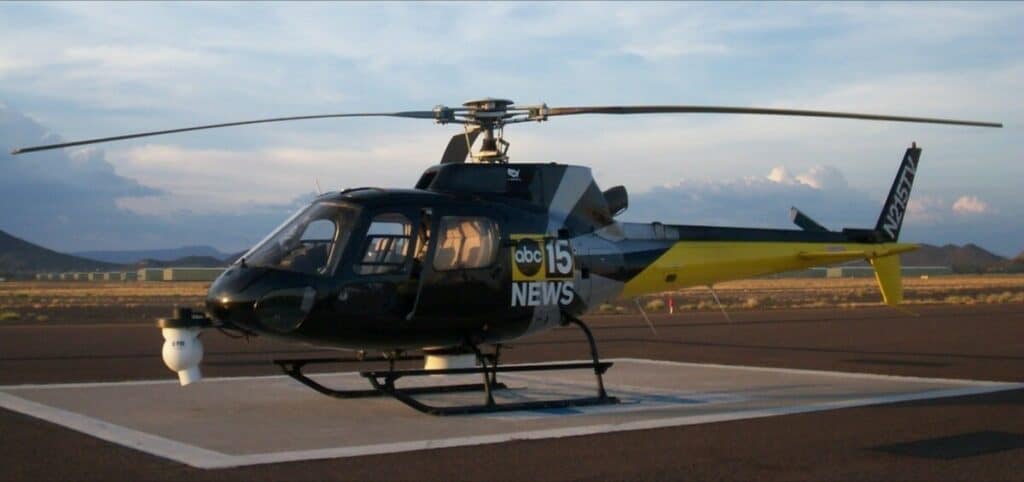
This is very useful for helicopters conducting search missions or news helicopters wanting to stay on scene to catch the action. Pilots will fly at the endurance speed recommended in the aircraft’s flight manual.
For Example:
Airbus AS350 Astar Max Continuous Cruise = 125knots = 2.5 hours flight time
Airbus AS350 Astar Endurance Cruise = 55knots = 4 hours flight time
Range Cruise:
When a pilot is wanting to cover a large distance with the helicopter they will select the recommended range cruise speed. This has been calculated based on the distance gained for the given fuel consumption. This is typically used when pilots are ferrying machines across the country or traveling in remote areas where fuel stops are limited.
Typical Range cruise speeds are around 110-120knots.
Do Helicopter Blades Change Rotation Speed?
There is a misconception that a helicopter’s main rotor blades change rpm to alter the speed or height of a helicopter. Main rotor RPM is maintained at a set speed throughout all phases of flight via a mechanical or electronic fuel control governor no matter what controls the pilot moves.
A function of creating lift is airspeed over the airfoil. Because the helicopter’s main rotor blades are its airfoils they have to be maintained at the optimum speed. Power from the engine is constantly changing to overcome the airfoil drag to ensure the rotor RPM stays within limits.
For example, the Airbus AS350 maintains the main rotor rpm around 390, whereas a Boeing CH-47 Chinook maintains 230 rpm.
Learn More…
Try These Articles:
* How Do Helicopter Engines Work? Your Ultimate Guide
* Helicopter Maintenance – How often do helicopters need looking at?

